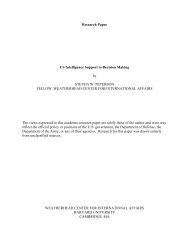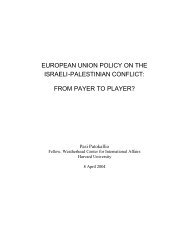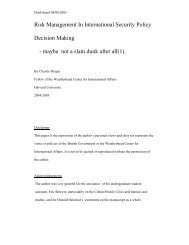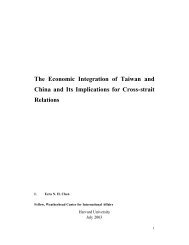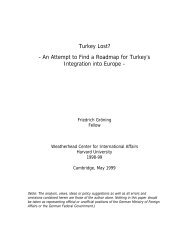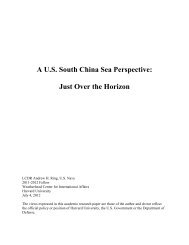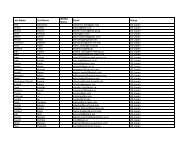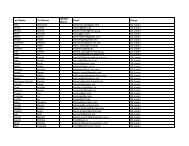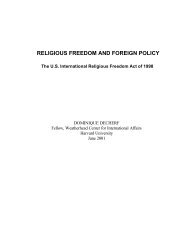A U.S. South China Sea Perspective: Just Over the Horizon
A U.S. South China Sea Perspective: Just Over the Horizon
A U.S. South China Sea Perspective: Just Over the Horizon
Create successful ePaper yourself
Turn your PDF publications into a flip-book with our unique Google optimized e-Paper software.
diplomatic isolation is <strong>the</strong> physical distance its military forces would have to travel to defend Itu<br />
Aba in <strong>the</strong> Spratlys.<br />
Taiwan’s military has benefited from decades of U.S. arms sales and support, and<br />
consequently has amassed more combat power than any o<strong>the</strong>r ASEAN member. Its defense<br />
budget is more than US$8 billion annually, larger than any ASEAN country. However, this force<br />
is for <strong>the</strong> defense of Taiwan itself and <strong>the</strong> shifting of forces over 900 miles (1,448 km) to <strong>the</strong><br />
southwest to protect Itu Aba in <strong>the</strong> Spratlys would constitute a major calculated risk as <strong>China</strong>’s<br />
forces lie less than 100 miles (161 km) across <strong>the</strong> Taiwan Strait. Fur<strong>the</strong>rmore, Taiwan’s<br />
ambiguous international status complicates its ability to take military action.<br />
Before <strong>China</strong> had amassed significant economic and military power, Taiwan had<br />
attempted to lead <strong>the</strong> <strong>South</strong> <strong>China</strong> <strong>Sea</strong> dispute to a peaceful conclusion. In 1995 President Lee<br />
Teng-hui urged twelve nations to revoke <strong>the</strong>ir claims and invest in <strong>the</strong> multinational <strong>South</strong> <strong>China</strong><br />
<strong>Sea</strong> Development Company with <strong>the</strong> profits used for infrastructure development in ASEAN<br />
countries. The idea did not find many supporters and was never pursued. However, Taiwan’s<br />
Ministry of Foreign Affairs recently released a statement “that Taiwan advocates developing <strong>the</strong><br />
resources of <strong>the</strong> [<strong>South</strong> <strong>China</strong> <strong>Sea</strong>] in conjunction with o<strong>the</strong>r countries based on <strong>the</strong> principles of<br />
shelving disputes and promoting peace and reciprocity.” 44<br />
<strong>China</strong> has been courting Taiwan for <strong>the</strong> last three years to work toge<strong>the</strong>r to uphold<br />
<strong>China</strong>’s sovereignty in <strong>the</strong> <strong>South</strong> <strong>China</strong> <strong>Sea</strong>. 45 <strong>China</strong> does not have any allies in <strong>the</strong> region to<br />
support its sovereignty claims and may feel it needs a coalition to refute <strong>the</strong> diplomatic activities<br />
and claims of Malaysia, Vietnam and <strong>the</strong> Philippines. Yet, Taiwan has determined that its strong<br />
relationships with <strong>the</strong> United States, Japan and ASEAN are too valuable to be risked by taking<br />
<strong>China</strong>’s side in <strong>the</strong> dispute.<br />
28



